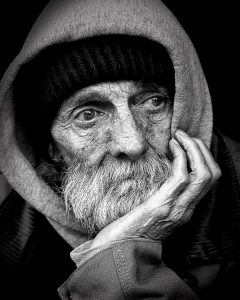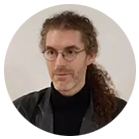The Geroscience Network: Determined to Slow Aging through Medical Science – Article by Reason

Reason
____________________________________________________________________________

Photo Credit: pexels.com
I will never be an old man. To me, old age is always 15 years older than I am. – Francis Bacon
Editor’s Note: Reason, in this article, highlights that aging is all about damage accumulation. Slowing aging means a slower pace at which damage accrues. Reversing aging means repairing that damage – and thus there are ways to do much better than merely tinkering with metabolism to somewhat slow down the arrival of new damage. This is a thought-provoking article and a good read.
~ Urhefe Ogheneyoma Victor, Assistant to the Director of Publication, United States Transhumanist Party, May 2022
______________________________________________________________________
Across the last twenty years or so two very important, slow-moving battles over ideas and strategy have been fought within and around the aging research community. The first was to gain acknowledgment that the treatment of aging as a medical condition is a viable goal, and thus obtain the necessary support to make progress towards that goal. Even as recently as fifteen years ago, after years of extending the lifespan of laboratory animals in various ways, treating aging was still more or less a forbidden topic in the research community. Thankfully we have a long way since then in the matter of ideas, and it was a tough and long-running uphill process of advocacy and persuasion – a great deal of work was required to create change. Today we can say that this first battle is near done and finished, with only the mopping up remaining to be accomplished within the scientific community. Those who a decade ago dismissed the goal of treating aging or simply remained silent are now ready to talk in public and provide support. The public at large is unfortunately still behind the times, much less informed or convinced on the matter of aging, but that will change too.
It is the second battle within the scientific community that is now more of a concern for advocates – certainly more of a concern for this advocate. That battle is to shape the research strategies that are funded and pursued: in short whether to try to modestly slow aging or to aim to build rejuvenation therapies capable of reversing aging. When it comes to the future of our health and longevity, this is just as important as the efforts needed to move the research community to support the treatment of aging at all, and at this point has much further to go to a satisfactory conclusion. Sadly we live in a world in which, for various historical and regulatory reasons, the research community is almost entirely set on trying to modestly slow aging. Research groups follow the traditional approach of drug development, searching for compounds that can alter the operation of metabolism so as to slow down some of the changes that accompany aging. This is enormously expensive and has a low rate of success – you can look at the failed efforts to produce calorie restriction mimetics, for example, such as the hundreds of millions of dollars and a decade put into sirtuin research with nothing to show for it at the end. Current efforts to repurpose the drug metformin are likely to end up in the same place: enormous sums and a great deal of effort are spent chasing effects that are tiny.
Aging is all about damage accumulation. Slowing aging means a slower pace at which damage accrues. Reversing aging means repairing that damage – and thus there are ways to do much better than merely tinkering metabolism to somewhat slow down the arrival of new damage. Since the research community has a very good catalog of the damage that causes aging, researchers are in a position to build treatments to repair it, therapies that can in principle produce rejuvenation. Those treatments have been planned and visualized in great detail for years now, and in a sparse few cases are under early clinical development in startups. Yet repairing the damage of aging to produce rejuvenation is a minority concern in the broader field, with little support despite its far greater potential. This, then, is the battle fought now, to direct the research community to the far better option rather than continuing in their status quo of working towards the far worse option.
The Geroscience Network is an example of what has come from victory in the first battle of ideas, to generate much greater support for treating aging within the research community. In the past few years things have blossomed to the point at which many influential figures openly advocate for the goal of treating aging, the root cause of all age-related disease, rather than treating age-related diseases one by one. The Geroscience Network was established among those US research groups and institutions whose principals have the greatest interest in treating aging as a medical condition. To quote the pertinent part of their brief:
We hypothesize that by targeting fundamental mechanisms of aging, clinical interventions can be envisaged that could delay or prevent age-related diseases and disabilities as a group, rather than one at a time. By planning and working in a coordinated way through the Geroscience Network, we intend to accelerate development and translation of effective treatments to delay or prevent age-related disabilities and diseases.
Some of the Geroscience Network researchers recently published a selection of open access position papers in the Journals of Gerontology. The papers frame their determination to treat aging and are focused on aspects of the strategy: how to move forward within the regulatory system, how to undertake a clinical translation of potential therapies, and how to build clinical trials for this new world of treating aging rather than age-related disease. Notably where specific technologies are mentioned there is little of anything that SENS rejuvenation research supporters would recognize as an effective approach to treating aging, however. The Geroscience Network is the product of researchers who have a slightly overlapping but overall quite different view of aging, which you can find described in the noted Hallmarks of Aging paper, or the later pillars of aging materials. Much of what is seen in those publications as a cause of aging, such as epigenetic changes, looks to my eyes to be a later consequence of the forms of molecular damage described in the SENS proposals. The overlapping areas where the Hallmarks of Aging and SENS agree, such as senescent cell clearance, are to be welcomed where they lead to efforts like UNITY Biotechnology, but it is still the case that more representative examples of Geroscience Network participant projects include the clinical trial of metformin and efforts to develop calorie restriction mimetic drugs, such as the failed sirtuin projects. So while on the one hand, it is great to see that the treatment of aging is now well supported as a goal for the research community, it remains unfortunate that the chosen approaches are so very marginal.
Still, there is a clear path ahead for the spread of SENS technologies into the mainstream. That is to demonstrate effectiveness, the old story of bootstrapping enough success on a shoestring budget to obtain greater support from those who were originally skeptical or had their own favored but less effective approach. Senescent cell clearance is the pioneering example here: advocated in the SENS vision for fifteen years, but ignored by the vast majority of researchers. Only in the last five years, since a 2011 demonstration of effectiveness, has more of the research community started to work in this area – and now two startups are working on bringing therapies to the clinic. This example puts the future of SENS rejuvenation therapies squarely on us, the donors, the philanthropists, and the supporters. We determine the degree to which SENS succeeds in spreading to the mainstream by our efforts to pull in enough funding and attention to get the research done and the prototypes built. So look at the message of the Geroscience Network researchers with some optimism: yes it is frustrating that they are headed down the wrong road, but they will adopt SENS approaches just as soon as those approaches can be proven in animal studies. Yes, it will be hard work all the way to the finish line, but when was anything in life easy? In any case, take a look at the papers and see what you think.
Moving Geroscience Into Uncharted Waters
Research into the basic biology of aging has undergone a seismic shift in the last 10-20 years, moving rapidly from the very descriptive approach focused on the aged that was the predominant focus by the end of the last century, to a more mechanistic (and primarily genetics-driven) phase, focused less on describing the aging phenotype in different models, and more on a definition of the molecular and cellular drivers of the process. This progression was accompanied by an evolution in the concepts and ideas that have dominated the field in the past, namely free radicals, cell senescence, and caloric restriction, each of which became the seed upon which the modern foci of research now stands. Progress in a variety of research areas has crystallized into the beginnings of a conceptualization of the process, including seminal publications that described the major hallmarks or pillars of aging.
Aging research is not simply an academic pursuit, it actually holds more promise in terms of helping mankind than most or all other biomedical fields. In terms of health and human suffering, it is well known that four out of five older Americans suffer from at least one chronic disease, and more than half suffer from multiple comorbidities. Aging being the major risk factor for all those diseases, it follows that research into aging could be pivotal in our efforts to reduce the suffering associated with the ravages of old age. In addition to the direct health issues, it has been calculated that care for the elderly currently accounts for 43% of the total health care spending in the United States. By delaying aging even by a lesser degree than currently achieved in animal models, there will be significant gains both in terms of health and wealth. The enormous advances in basic aging research, coupled with the promises described in the previous paragraphs, led to the concept of geroscience, a field that aims to understand the molecular and cellular mechanisms responsible for aging being the major risk factor and driver of common chronic conditions and diseases of the elderly. Of course, there is considerable work to be done in order to bring the field forward and move aging biology towards translation. Major areas in need of further development include, in the preclinical space, the development of better, reliable, and predictive biomarkers, as well as development of metrics for health, including resilience.
Barriers to the Preclinical Development of Therapeutics that Target Aging Mechanisms
An effective preclinical pipeline for developing interventions that target fundamental aging processes could one day transform medicine. However, at the Geroscience Network retreat, it was evident that the best potential strategies for drug discovery and development were not perceived as uniform among those working in the field. In some sense this is not surprising, as researchers have yet to define what is needed to develop a mechanism-based aging therapeutic with clinical utility. Still, the discordance among leaders in the field was enlightening-revealing many unanswered questions and unmet challenges in the discovery and preclinical development of drugs that target mechanisms of aging.
Recent, fundamental advances in our understanding of aging biology have brought the prospects of therapeutic interventions to extend health span and treat age-related diseases and disabilities as a group closer to reality. Despite the growing numbers of promising genetic and pharmaceutical interventions, significant work and financial investment are still needed in order to translate these basic science discoveries into the clinic. To this end, clinical trial strategies relevant to human frailty and resilience must first be established in validated invertebrate and vertebrate models. In addition, standardized preclinical drug development pathways are desperately needed. Some barriers to the clinical translation of therapies that target fundamental aging processes can be overcome by developing new preclinical testing approaches and clinical trials strategies, as well as and funding impediments unique to aging interventions. Together, we must engage in dialog and establish a framework to facilitate the translation of candidate compounds into effective drugs that promote health span and target age-related disorders in humans.
The successful translation of therapies that target fundamental aging processes into routine clinical interventions could transform the practice of medicine and human health. A number of candidate drugs (many already FDA-approved for other indications) have shown promise in preclinical studies. This Geroscience Network retreat developed ideas for proof-of-concept clinical trials that could be the next step in translating interventions that target fundamental aging processes into clinical practice. We described three frameworks for proof-of-concept trials, targeted at age-related diseases, geriatric syndromes, and resilience to acute stressors. Some aspects of clinical trial design are common to all three, whereas some require unique consideration in each framework. Importantly, proof-of-concept clinical trials would serve to test and advance the “geroscience hypothesis” that targeting the fundamental biology of aging will affect a range of age-related outcomes. Trial outcomes would be multidimensional and include outcomes related to the mechanism of action of the intervention; specific to the disease, syndrome, or stress under study; related to off-target effects of the intervention; and broadly relevant to the mechanisms and physiology of aging. Finally, several concrete steps could greatly accelerate the progress of clinical trials of interventions that target basic aging processes, including the development of standardized templates for trial design, toolkits for standardized outcome measurements, the establishment of a national geroscience biobank, and the development of specialist trial and training centers in the Geroscience Network.
Strategies and Challenges in Clinical Trials Targeting Human Aging
Clinical trials that target fundamental aging processes in humans are a novel concept that presents unique challenges and enormous opportunities. Challenges include selection of appropriate study populations, study designs, interventions, and outcomes. We presented two models that conceptualize trial designs for interventions that target fundamental aging processes in long-term and acute settings, defined by extension of health span and resilience to acute stressors, respectively. However, in order to gain the full support of federal and private sectors for development of therapeutics that target aging in humans, it is important to have “aging” or aging-associated outcomes such as frailty, functional decline, and multimorbidity designated as conditions eligible for registration by the FDA. Evidence from human studies is emerging that indicates certain interventions can target multiple age-related conditions simultaneously, potentially by interfering with the aging process itself. With the aging population projected to grow exponentially in the near future, clinical studies that can demonstrate the protective effect of these therapeutics during acute and chronic perturbations in aging humans are more timely than ever. Thus, delaying or preventing the disabilities that occur as a consequence of the aging process would result not only in tremendous cost savings for the healthcare system but also in gains for society on the whole from the increase in productive contributions from older members of society.
Recently discovered interventions that target fundamental aging mechanisms have been shown to increase life span in mice and other species, and in some cases, these same manipulations have been shown to enhance healthspan and alleviate multiple age-related diseases and conditions. Aging is generally associated with decreases in resilience, the capacity to respond to or recover from clinically relevant stresses such as surgery, infections, or vascular events. We hypothesize that the age-related increase in susceptibility to those diseases and conditions is driven by or associated with the decrease in resilience. Thus, a test for resilience at middle age or even earlier could represent a surrogate approach to test the hypothesis that an intervention delays the process of aging itself. For this, animal models to test resilience accurately and predictably are needed. In addition, interventions that increase resilience might lead to treatments aimed at enhancing recovery following acute illnesses, or preventing poor outcomes from medical interventions in older, prefrail subjects.
At a meeting of basic researchers and clinicians engaged in research on mechanisms of aging and care of the elderly, the merits and drawbacks of investigating effects of interventions on resilience in mice were considered. Available and potential stressors for assessing physiological resilience as well as the notion of developing a limited battery of such stressors and how to rank them were discussed. Relevant ranking parameters included value in assessing general health (as opposed to focusing on a single physiological system), ease of use, cost, reproducibility, clinical relevance, and feasibility of being repeated in the same animal longitudinally. During the discussions it became clear that, while this is an important area, very little is known or established. Much more research is needed in the near future to develop appropriate tests of resilience in animal models within an aging context. The preliminary set of tests ranked by the participants is discussed here, recognizing that this is a first attempt.

Reason is the founder and writer of Fight Aging!, a leading voice in the rejuvenation biotechnology and patient advocacy communities for more than fifteen years. He is also co-founder and CEO of Repair Biotechnologies, a biotech startup working towards the reversal of atherosclerosis, and has presented at numerous industry conferences, including Undoing Aging and Ending Age-Related Diseases.